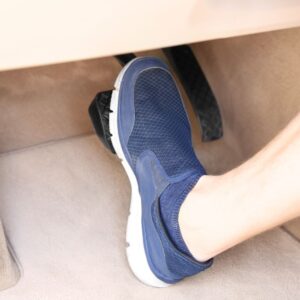Every driver is different. Some drivers like to step on the gas pedal as soon as the engine warms up, creating a roaring engine sound that’s music to their ears. Other drivers like to take it slow, building momentum as they go.
Some take their time and drive carefully as other vehicles pass by. These are the defensive drivers.
What Exactly Is Defensive Driving?
Defensive driving is a set of safe practices that drivers observe while they’re on the road. The techniques vary greatly, and each one can help reduce the risk of crashing while you’re on the road.
Being a defensive driver essentially means you’re someone who attempts to avoid an accident rather than get involved in one.
Defensive Driving Essentials: Focus and Awareness

To be a defensive driver means to know everything that’s happening around you while you’re on the road. This is where focus and awareness come in.
Staying focused and alert are qualities that make a great driver.
Driving is a skill that requires a lot of thinking 一 from observing road conditions and speed limits to awareness of traffic laws and signs.
With all the things to keep in mind while on the road, a defensive driver generally has no room for distractions.
There might be times when a driver can get overconfident with their driving skills to the point where they do multiple things at once, such as texting while driving or watching a video from the infotainment screen.
Regardless of whether a person is new to driving or has been handling the wheel for quite some time, it’s extremely important to focus on the road and nowhere else.
Driving can sometimes take up too much of your time, depending on the distance or traffic conditions. Under these circumstances, it’s fairly easy to fall asleep behind the wheel, and there won’t be enough time to slam the brakes or steer the vehicle back to the right lane.
By staying awake and refraining from drinking alcoholic drinks before manning the steering wheel, a defensive driver will be able to react accordingly while they’re on the road.
Also, keep in mind that awareness goes beyond minding your own vehicle. One of the qualities that make a good defensive driver is their ability to observe other vehicles and anticipate what they’re about to do.
Defensive vs. Offensive Driving
Offensive driving is the opposite of defensive driving. These two are entirely different driving techniques, and we’ll sort each one out in this section.
A defensive driver anticipates the actions of other drivers to plan their strategy accordingly.
For example, if you notice that someone is tailgating you, your response is to switch lanes so that the vehicle can pass.
A defensive driver will usually slow down upon seeing another vehicle’s turn signals to let the other driver pass.
Meanwhile, offensive driving takes on a more proactive approach to such situations.
For example, instead of giving way to a vehicle behind you, you’d rather speed up to create more distance.
An offensive driver will also speed up to prevent a vehicle that’s switching lanes from overtaking them.

Benefits of Defensive Driving
Several benefits come with being a defensive driver. Here are some of them.
Safe Travels
As a defensive driver, you’re generally more careful than others 一 you avoid areas where tension might build up among other drivers, and you’re more patient when it comes to dealing with traffic jams and overtaking cars.
With those qualities, you’re more likely to get to your destination without encountering major issues, unlike impatient drivers who could end up bumping into another vehicle.
You’re Helping Your Vehicle Last Longer
Defensive drivers are rarely in a hurry to get to their destination. They’re methodical, focused, and aware of what’s happening around them.
These characteristics make them calm drivers, which also means that they’re less likely to put too much stress on their vehicles by slamming on the brakes and pushing the pedal to the metal.
You’re Less Likely to Get a Ticket
A defensive driver generally has good instincts and is quite careful with maneuvering their vehicle. So if you’re calm and collected while on the road, you’re less likely to get a ticket for violating traffic regulations.
Mastering the Art of Defensive Driving
Defensive driving is more about driving qualities rather than skills. Here are some tips on how to become a defensive driver.
Take Your Time
Speeding is a form of aggressive driving.
Always try to control your speed and take your time. It’s important to resist the urge to speed up and overtake all the vehicles you can.
Always Think Safety First
Safety is the most important building block of defensive driving.
Always drive with safety in mind. Doing so can make you more cautious and conscious of your driving habits.
Avoid Distractions
Focus is key when you’re on the road. Some of the distractions you might encounter include phone calls, alcoholic drinks, and extremely loud music.
Try your best to avoid or drown them out until you can stop safely. A quick glance at your phone is enough to get you into a nasty fender bender, so always keep your eyes on the road.
Always Maintain a Safe Following Distance
Part of defensive driving is anticipating how other drivers will move. Always keep a safe following distance from other vehicles to reduce the risk of collisions.
Observing the three to four-second rule is one way to observe a safe following distance.
Any information provided on this Website is for informational purposes only and is not intended to replace consultation with a professional mechanic. The accuracy and timeliness of the information may change from the time of publication.















